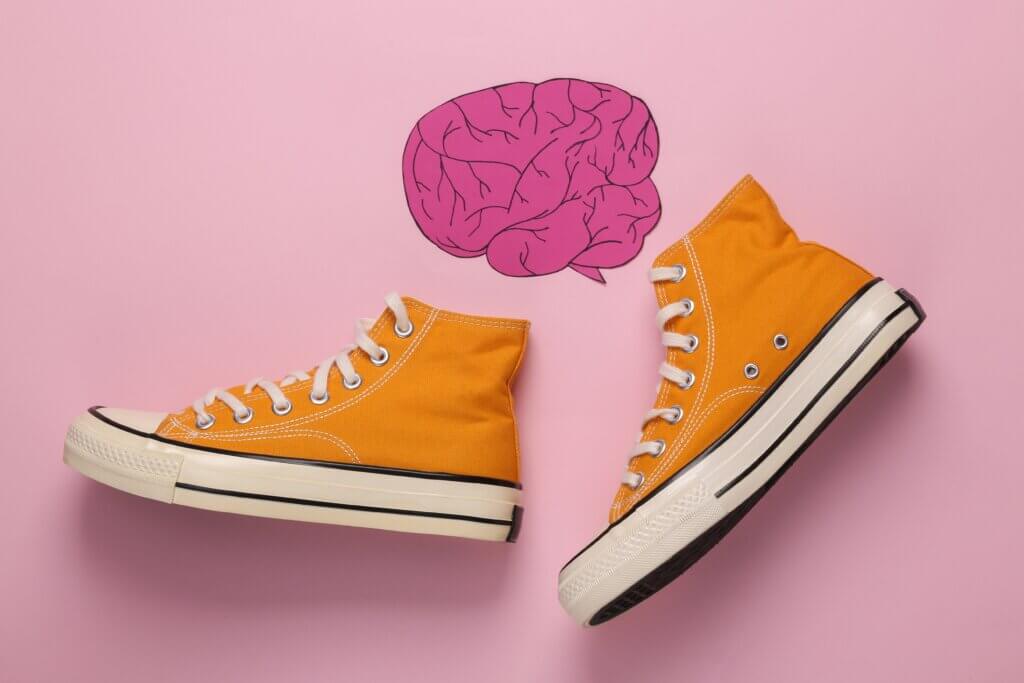You may think that your vision is a constant, seamless stream, but new research reveals that our perception actually ebbs and flows in time with our footsteps. A team of neuroscientists from the University of Sydney have discovered that the brain’s visual processing is intimately linked to the rhythm of walking.
Their findings, published in the journal Nature Communications, shed light on the complex interplay between perception and movement in our everyday lives.
“This work reveals a previously unknown relationship between perception and movement,” says Dr. Matthew Davidson, the lead author of the study, in a statement. “It bridges a gap between experimental psychology and our natural, everyday behavior.”
To understand this phenomenon, imagine yourself out for a stroll. As you swing from one step to the next, your visual perception is sharp and your reactions are quick. But at the moment your foot hits the ground, your vision temporarily dulls and your response time slows. It’s as if your brain is quickly shifting gears between each step.

Professor David Alais, a co-author of the study, compares this to a duck swimming on a pond: “Beneath the smooth motion on the surface there is a lot cycling activity beneath.” Just as a duck’s legs paddle unseen below the water, our brains are constantly cycling between high and low sensitivity to visual input as we walk.
The researchers discovered this by having subjects walk along a path in a virtual reality environment while responding to random visual stimuli. Sophisticated motion tracking allowed them to precisely align each person’s visual sensitivity with the timing of their steps. The results were striking – in 83% of the participants, visual perception consistently dipped at the moment of each footfall.
This study builds upon earlier work from the same lab showing that our perception of both vision and sound operates in a cyclic manner, with the brain sampling the environment about eight times per second. Professor Alais explains how the new findings add to this: “The critical new finding in this study is that these oscillations in the brain’s sampling of the world slow down when walking to match the step cycle.”
So why would our visual system be tied so closely to the rhythm of our steps? One theory is that it allows the brain to prioritize different functions at different times. “One possible explanation is that vision becomes secondary to motor control while your foot is grounded and the next step is planned,” says Professor Alais. “Once you are in the swing phase between footfalls, the brain switches back to prioritizing perceptual sampling of the world.”
This discovery opens up many new questions and possibilities. Could perception of other senses like sound and touch also be modulated by walking? How does this perceptual rhythm change as we age or in individuals with neurological disorders that affect gait? The researchers plan to investigate these topics in future studies.
There may also be practical applications for this knowledge. Dr. Davidson suggests it could lead to “cheap and easy diagnostic tests using VR headsets” for early detection of neuromuscular or psychiatric conditions. It might even be used in sports science to optimize athletes’ reaction times and decision-making.
At a deeper level, these findings probe at the very nature of conscious experience. If our brains sample the world in discrete pulses, how do we perceive a smooth and continuous stream of awareness? Professor Frans Verstraten, another co-author, ponders this question: “This was once a question for philosophers, but with access to technology neuroscientists have been able to shed light on how the gaps get filled in.”
The current understanding is that the brain is a predictive machine, constantly making its best guesses to construct a coherent perception of reality. But as Professor Verstraten notes, “clearly, we need more research to deepen our understanding.”
So the next time you go for a walk, take a moment to marvel at the hidden rhythms at work within you. With each step, your brain is dancing to a beat all its own, shaping how you see and interact with the world around you. The simple act of strolling down the street is actually an intricate neural ballet, orchestrating perception, prediction and movement in a seamless flow. While much remains mysterious, this research gives us a fascinating glimpse behind the curtain of consciousness.












